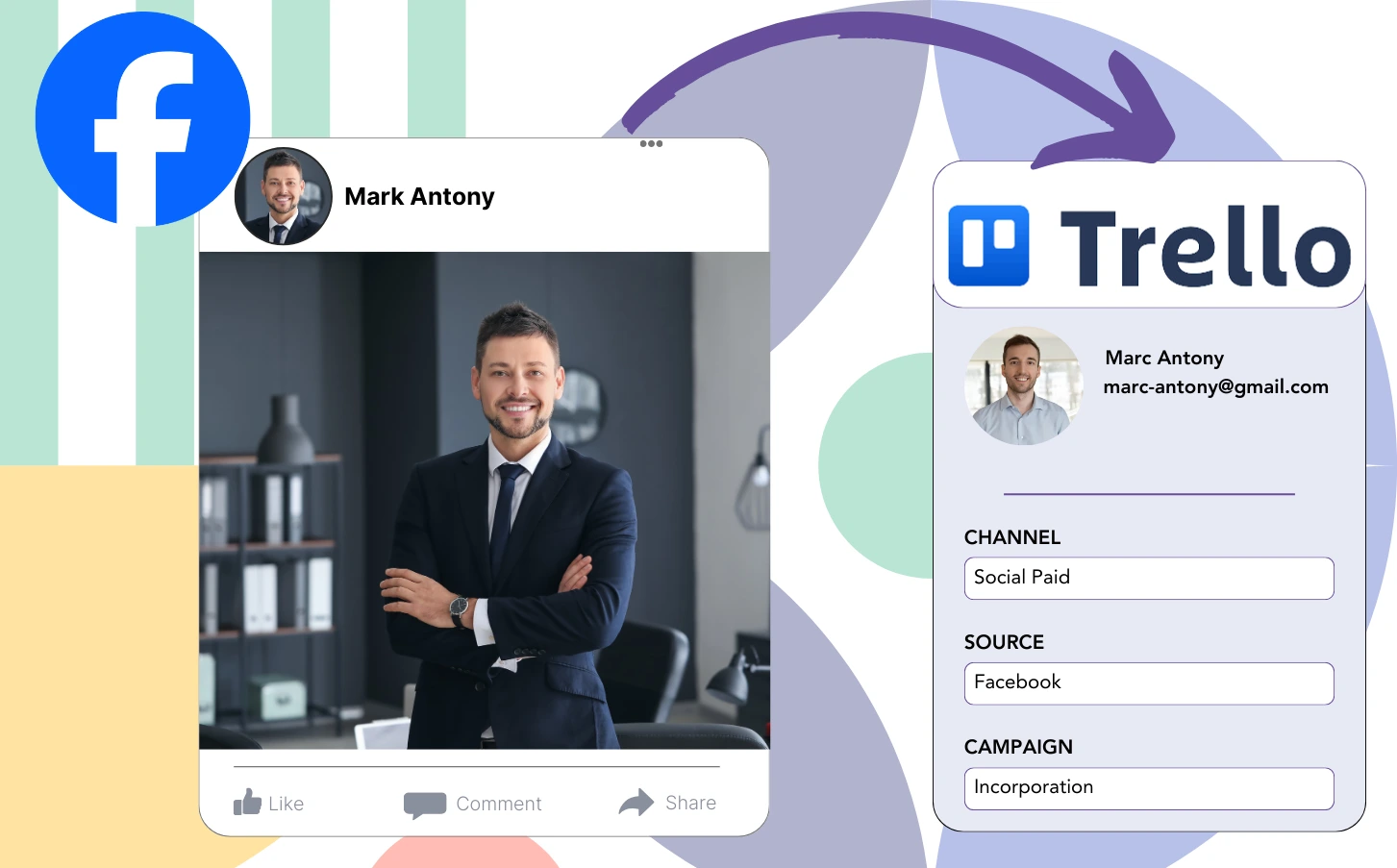Using Facebook to run lead generation ads and sending leads to Trello does not allow you to identify the specific ad responsible for each lead, making it impossible to know which ad led to a sale when the lead converts into a customer.
The absence of this data keeps you from optimizing your Facebook ads, so you end up investing in several ads at once without any clarity on which one is bringing the revenue.
Leadsource fixes the issue by connecting every lead to the Facebook ad that generated it, providing details like campaign, ad set, audience, and ad.
This article will show you how to attribute each lead to the exact Facebook ad, covering the campaign, ad set, and audience.
Let’s explore this!
Capture Facebook ads in Trello
Step 1: Add Leadsources in the head tag of your website
Sign up to Leadsources.io, and benefit from our 14-day free trial.
Add the Leadsources tracking code in the head tag of your site – follow this easy step-by-step guide.
Step 2: Add the UTM parameters to your Facebook ads campaigns
Place the UTM parameters you’d like to track into your Facebook campaigns.
For illustration purposes, you can track the campaign, ad set, audience, and ad using these UTM parameters:
- UTM_source=facebook
- UTM_campaign=campaign-name
- UTM_term=ad-set-name
- UTM_content=ad-name
Even in the absence of UTM parameters, Leadsources records all necessary lead source data, including channel, landing page, and subfolder, offering complete insight at the lead level.
Step 3: Add the hidden fields in your form
For effective storage of lead source data by Leadsources, hidden fields must be implemented in your landing page form.
So, whenever a new lead submits the form, Leadsources adds the Facebook ads data into the hidden fields.
To complete the setup, look at our detailed guide on how to incorporate hidden fields into your form.
Step 4: Capture the Facebook ads data in Trello
Upon clicking your Facebook ads and arriving at your destination page, Leadsources captures key Facebook ads data, including campaign, ad, ad set, and audience.
Leadsources automatically inserts Facebook ads data into the hidden fields of your form.
After form submission, Facebook ads data can be automatically shared with Trello along with your leads. Just connect your form to Trello for this feature.
How does Leadsources work?
When the Leadsources tracking code is integrated into the head tag of your site, it collects Facebook ads data, like campaign, ad set, audience, and ad, each time a visitor lands on your website.
Once captured, the Facebook ads data is retained in the hidden fields of your form. This data can later be transferred to your Trello along with the lead.
The following data is sourced by Leadsources from visitors:
- Channel
- Source
- Campaign
- Content
- Term
- Landing page
- Landing page subfolder
This lead source data is still tracked by Leadsources, even if UTM parameters are not included.
There are times when you cannot make use of UTM parameters:
- Google Search
- Instagram bio link
- Social media posts
- Etc.
For the majority of lead source tracking tools, this presents a challenge, as they rely solely on UTM parameters for their data collection. In contrast, Leadsources keeps tracking some lead source data without relying on UTM parameters:
- Channel
- Source
- Landing page
- Landing page subfolder
As a result, Leadsources is different from other tools by providing lead data tracking across all channels:
- Organic Search
- Paid Search
- Organic Social
- Paid Social
- Referral
- Affiliate
- Display Advertising
- Direct Traffic
With automatic traffic categorization by channel, Leadsources gives you a clean and effective dataset.
By adopting Leadsources, you build a strong framework for lead source tracking across all channels in a centralized place.
How to run performance reports
Now that you’re capturing Facebook ads data in Trello, you can create several types of performance reports, including:
- Leads by channel
- Leads by campaign
- Leads by ad set
- Leads by audience
- Leads by ad
- Leads by landing page
- Leads by landing page subfolder
This aids in evaluating and adjusting your Facebook ads budget with greater clarity.
Let’s review the various types of reports you can put together.
Lead performance reports
These reports summarize the volume of leads collected from:
- Channel
- Campaign
- Ad set
- Audience
- Ad
- Landing page
- Landing page subfolder
Example #1
Gather information from multiple channels like SEO, PPC, and email to generate a report called “Leads by Channel.”
Example #2
By identifying the top channel, such as Facebook ads, you can direct your attention to it and examine the lead counts from every campaign.
Example #3
Once you determine the leading campaign for lead generation, you can identify the audience, ad set, or ad responsible for those leads.
Sales performance report
While finding the ads and keywords that generate leads is beneficial, do they also drive your revenue streams?
Sending your form data to Trello helps create detailed sales performance reports.
Example:
| Channels | Search Paid | Social Paid |
| Leads | 50 | 75 |
| Sales | 5 | 6 |
| Average order value | $150 | $100 |
| Revenue | $750 | $600 |
After examining the data from your Google and Facebook ads, you identified that Social Paid ads yielded a greater lead count than Search Paid ads.
Following several weeks of assessment, you observe that the Search Paid channel yielded more revenue with a smaller number of leads than the Social Paid channel, encouraging you to allocate more budget to Search Paid campaigns.
LeadSources tracks the source of each lead in Trello, whether they come from ads, organic search, social, email, etc. and syncs that data with each submission. See the full breakdown on the lead source in Trello page.
